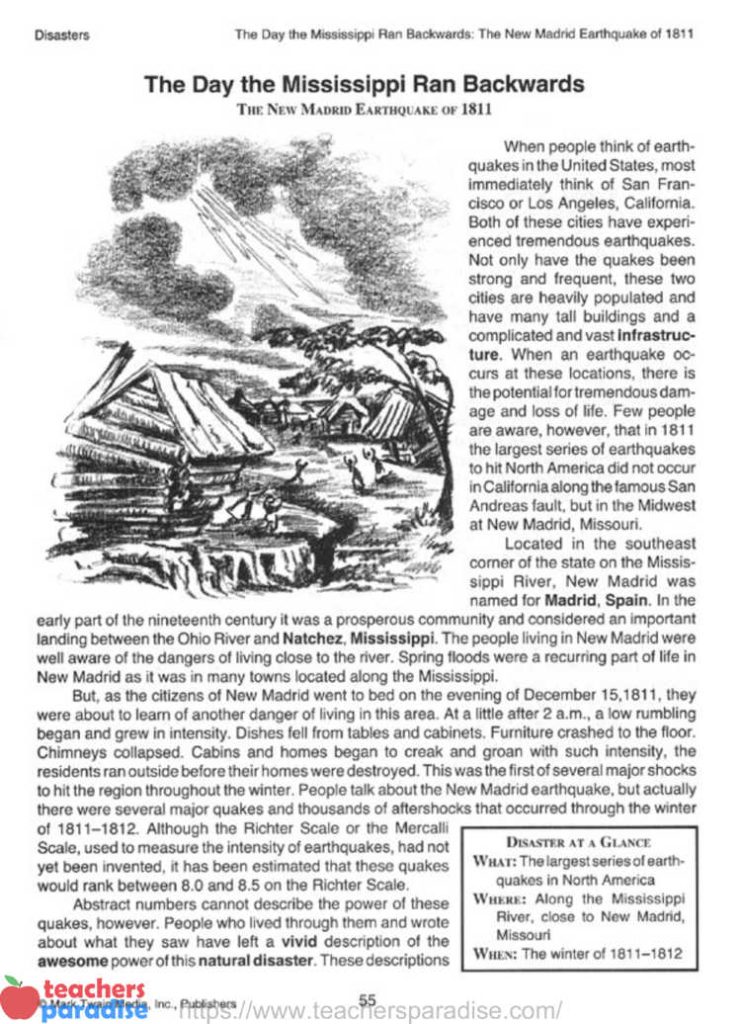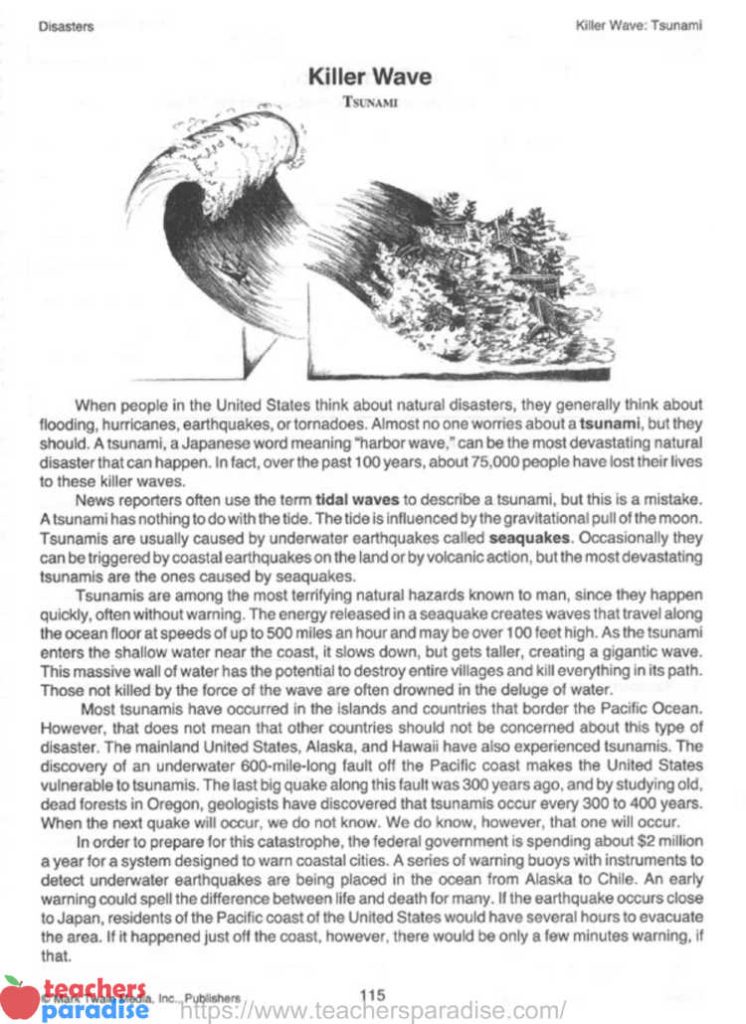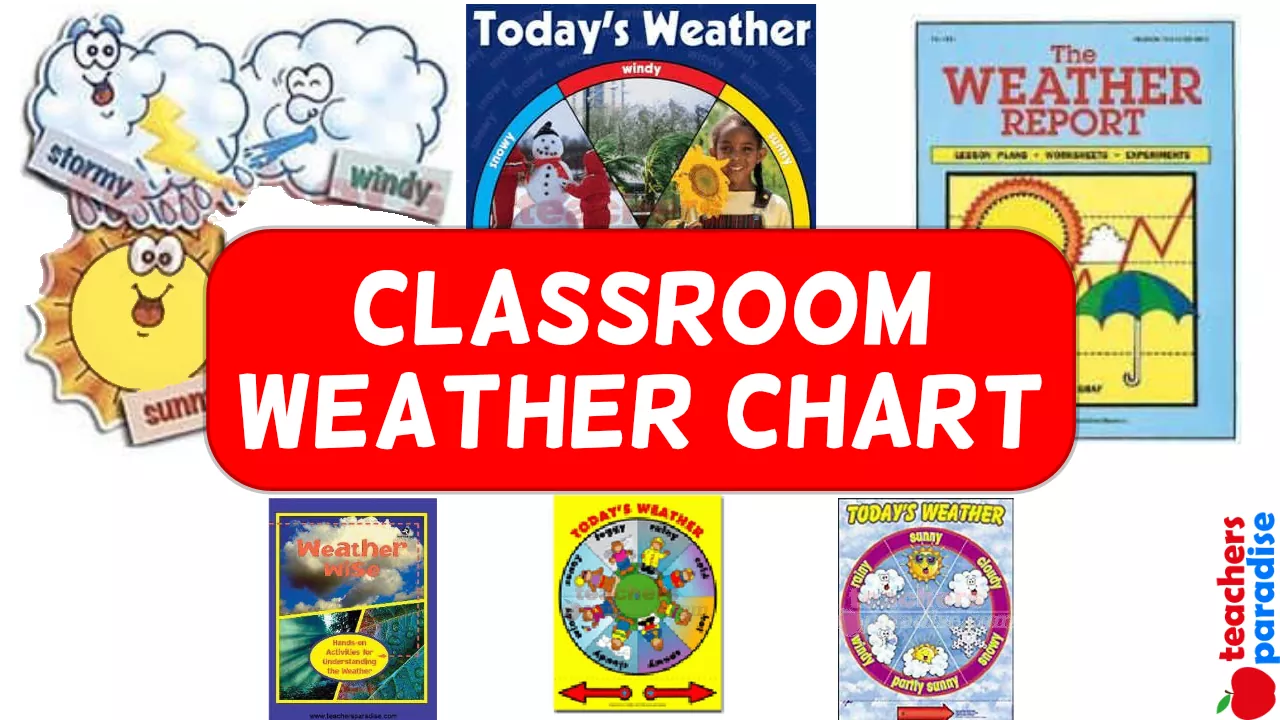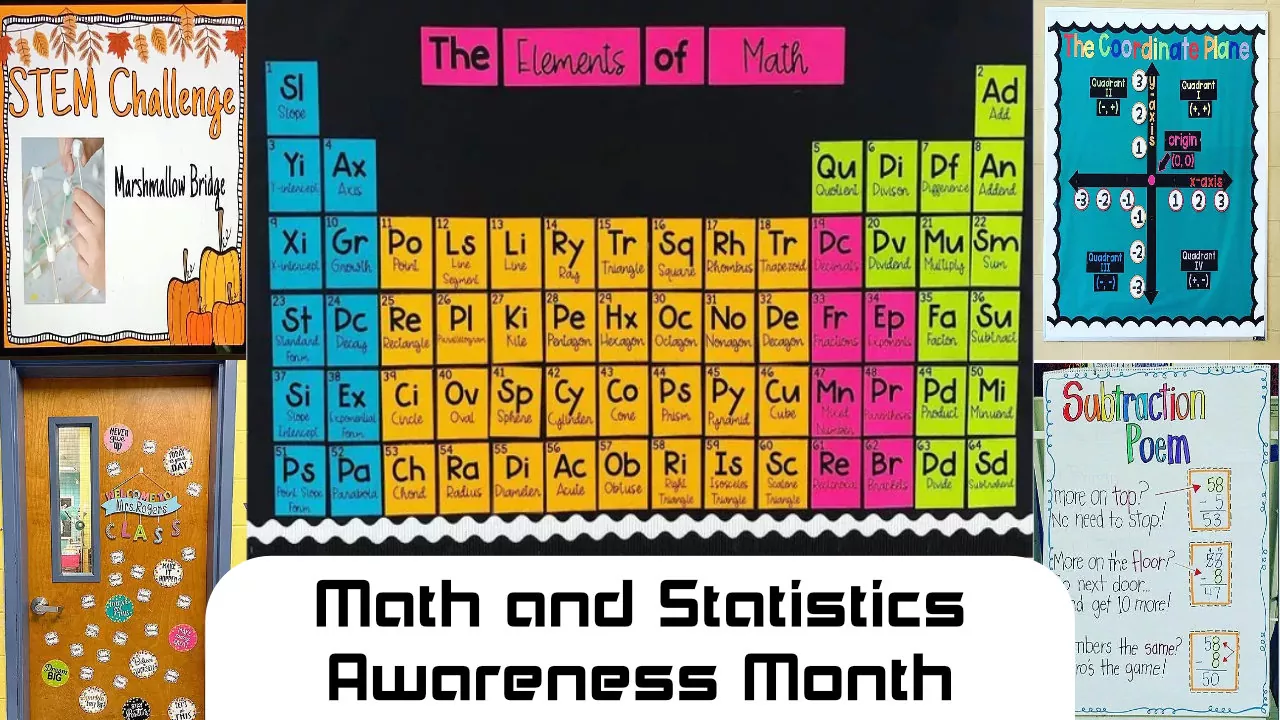Disasters Published by Mark Twain Media, Inc., Publishers
The Day the Mississippi Ran Backwards
THE NEW MADRID EARTHQUAKE OF 1811
When people think of earthquakes in the United States, most immediately think of San Francisco or Los Angeles, California. Both of these cities have experienced tremendous earthquakes. Not only have the quakes been strong and frequent, these two cities are heavily populated and have many tall buildings and a complicated and vast infrastructure. When an earthquake occurs at these locations, there is the potential for tremendous damage and loss of life. Few people are aware, however, that in 1811 the largest series of earthquakes to hit North America did not occur in California along the famous San Andreas fault, but in the Midwest at New Madrid, Missouri.
WORKSHEET & Sample PDF Activity
Sample PDF Activity
Located in the southeast corner of the state on the Mississippi River, New Madrid was named for Madrid, Spain. In the early part of the nineteenth century it was a prosperous community and considered an important landing between the Ohio River and Natchez, Mississippi. The people living in New Madrid were well aware of the dangers of living close to the river. Spring floods were a recurring part of life in New Madrid as it was in many towns located along the Mississippi.
DISASTER AT A GLANCE
WHAT: The largest series of earth quakes in North America
WHERE: Along the Mississippi River, close to New Madrid, Missouri
WHEN: The winter of 1811-1812
But, as the citizens of New Madrid went to bed on the evening of December 15,1811, they were about to learn of another danger of living in this area. At a little after 2 a.m., a low rumbling began and grew in intensity. Dishes fell from tables and cabinets. Furniture crashed to the floor. Chimneys collapsed. Cabins and homes began to creak and groan with such intensity, the residents ran outside before their homes were destroyed. This was the first of several major shocks to hit the region throughout the winter. People talk about the New Madrid earthquake, but actually there were several major quakes and thousands of aftershocks that occurred through the winter of 1811-1812. Although the Richter Scale or the Mercalli Scale, used to measure the intensity of earthquakes, had not yet been invented, it has been estimated that these quakes

Abstract numbers cannot describe the power of these quakes, however. People who lived through them and wrote about what they saw have left a vivid description of the awesome power of this natural disaster.
Killer Wave TSUNAMI
When people in the United States think about natural disasters, they generally think about flooding, hurricanes, earthquakes, or tornadoes. Almost no one worries about a tsunami, but they should. A tsunami, a Japanese word meaning “harbor wave,” can be the most devastating natural disaster that can happen. In fact, over the past 100 years, about 75,000 people have lost their lives to these killer waves.
News reporters often use the term tidal waves to describe a tsunami, but this is a mistake. A tsunami has nothing to do with the tide. The tide is influenced by the gravitational pull of the moon. Tsunamis are usually caused by underwater earthquakes called seaquakes. Occasionally they can be triggered by coastal earthquakes on the land or by volcanic action, but the most devastating tsunamis are the ones caused by seaquakes.
Tsunamis are among the most terrifying natural hazards known to man, since they happen quickly, often without warning. The energy released in a seaquake creates waves that travel along the ocean floor at speeds of up to 500 miles an hour and may be over 100 feet high. As the tsunami enters the shallow water near the coast, it slows down, but gets taller, creating a gigantic wave. This massive wall of water has the potential to destroy entire villages and kill everything in its path Those not killed by the force of the wave are often drowned in the deluge of water.

Most tsunamis have occurred in the islands and countries that border the Pacific Ocean. However, that does not mean that other countries should not be concerned about this type of disaster. The mainland United States, Alaska, and Hawaii have also experienced tsunamis. The discovery of an underwater 600-mile-long fault off the Pacific coast makes the United States vulnerable to tsunamis. The last big quake along this fault was 300 years ago, and by studying old, dead forests in Oregon, geologists have discovered that tsunamis occur every 300 to 400 years. When the next quake will occur, we do not know. We do know, however, that one will occur.
In order to prepare for this catastrophe, the federal government is spending about $2 million a year for a system designed to warn coastal cities. A series of warning buoys with instruments to detect underwater earthquakes are being placed in the ocean from Alaska to Chile. An early warning could spell the difference between life and death for many. If the earthquake occurs close to Japan, residents of the Pacific coast of the United States would have several hours to evacuate the area. If it happened just off the coast, however, there would be only a few minutes warning, if that.
























